Today’s images are from a recent shoot – and shakedown test – of my recently acquired Hasselblad H5D-50C and some other bits of new lighting equipment. The brief: film noir. The model is a local actress. Those of you who frequent my site will know that portraiture – especially of the posed and lit kind – is not something I do often (but at the same time, I do more of it than you might think) mainly because it’s somewhat outside my usual focus of corporate documentary and architecture/ interiors. That said, when everything comes together it can be rather satisfying; I’ve always viewed portraiture as a conversation during which you might just happen to have the lights set up and a camera handy – very few people are aware of the way they look, body position etc. to a degree that they can control it to produce a desired result. It’s much easier to talk to your subject and try to elicit the desired responses without them quite being fully aware of it – that way, the results turn out natural, too.
Images in this series were shot with the H5D-50c, 50/3.5 II and 100/2.2 lenses, and post processed with the Monochrome Masterclass workflow. Lighting with six speedlights in two Lastolite Ezybox IIs.
Fortunately, the client for this shoot was a friend and accepted that there would be a bit of a learning curve involved. The experimentation of course occurred at the tail end once the shot list was complete. I had a few objectives here:
- Work out any remaining kinks in the change of workflow after switching to the H5.
- Wireless tethering via Phocus Mobile to the iPad – yay or nay?
- No more TTL – but more critically, no more flash power control from on-camera; would this be an issue in practice?
- Experiments with high(er) speed sync
- New soft boxes: Lastolite Ezybox II Octa and Switch-L, plus quad brackets
- Brush up on my portrait lighting, especially for creation of a mood
So how’d it go? We’re pleased with the results, so that’s a plus; postprocessing was faster than I expected (from the D810 and similar cameras) and I’m once again very, very happy with the tonality – especially highlight rolloff. But I found that I had to work very differently: no checking frames; just shoot and curate later. It’s not that playback and zoom are slow – it’s still faster than the A7RII – but it just interrupts the flow too much, and to be honest, the screen is a generation behind even the 2-year old D810, and it shows. It’s still just a device for confirming capture, clipping, and overall composition. Checking critical focus is tricky – the last degree isn’t always visible. Furthermore, care is needed with AF because depth of field is noticeably shallower than on FF, and the increased pixel density per degree angle of view of course exacerbates that, too, though True Focus* helps. In practice, this means having a lot more storage handy than usual because I usually curate as I shoot – obvious misses in composition, timing, focus, exposure etc. can be discarded. The whole process is just a little slower with the H5, which discourages that and encourages you to just shoot. I suppose that’s good and bad in a way – I focus more on the subject, but may not catch operator errors.
*There’s a gyro or accelerometer in the camera that measures how much you tilt the camera from the centre focus point when recomposing, and adjusts focus position accordingly to avoid parallax errors. Hitting the focus check shortcut button on playback also takes you to the point where the camera thinks you intended to focus. I’d say it works about 80% of the time in practice, but gets confused by backlit subjects – though that could be a limitation of the AF system itself.
I still don’t have a good handle on battery life – on one hand, it seems to be shorter than expected, but extended sessions in the past (e.g. Thaipusam) have proven that longevity is better than expected. The only conclusion I can come it is that it seems to be more closely determined by power-on time than number of captures; about three hours with wifi tethering on seems to be about the limit, or closer to five without. That’s not bad because it means you can make it through a full day of shooting on two batteries – I have four and two chargers, so I’m safe for now.
Wireless tethering was great when it worked, but often threw a communication error – I narrowed it downs to a) range and b) turning LCD standby off, which seemed to help. If the iPad was within about a meter or so, no problem. Further, and it seems the signal wasn’t strong enough from the camera’s access point directly. It worked fine over an existing network; Hasselblad are aware of the problem and are working on a fix. I’ve never been a big fan of wifi tethering options in the past – some are clunky to operate, requiring various bits of fiddling with settings to connect the camera, and others are limited to viewing preview jpegs only – the Hasselblad solution is (usually) easy to connect, and will preview raw files at 100% – this is massively useful for checking critical focus in the field, and for clients to checks entails like facial expressions etc.
Let’s talk about lighting: I’m used to the Nikon iTTL system where either I let the flashes do the work and the camera take care of metering (or at least try it once to see what comes out) with me doing the fill ratios and biasing from one group to another. It isn’t a problem to work manually, but I’m very used to changing flash settings on the camera itself – or from the commander on top of it. Given that I’m for now still retaining the SB900s (I have eight of them) for flexibility and weight, the only solution is a somewhat clunky one: PocketWizard Plus X on the camera, and then one Plus X for each group of flashes (i.e. on the same soft box bracket) plus sync cables to tie them together – or a sync cable to one, and then the rest in SU4 optical slave mode.
To be honest, whilst it’s workable, you really need an assistant to be running from soft box to soft box to change settings – four times. I did also find myself short on power once or twice, but fortunately ISO 200 is just as clean as ISO 100. (This is obviously not ideal for light control as you are effectively letting more ambient in, too. Boosting ISO even further may compromise image quality.) Let’s just say it’s not the most fluid solution in practice, and I’m seriously considering a Profoto B1 or B2 system. The advantage of the B2s being size and control from the base power pack which you can have near you, plus you can run off mains power – or not. The disadvantages are only having half the power (250w/s) than the B1s and the whole thing having to be cabled to the base battery, which can only support two heads. The B1s are doubly powerful, but quite heavy/large and far less flexible in mounting options, plus you can only adjust manual (i.e. non TTL) power from the heads themselves – but they are wireless. Decisions, decisions…
Higher speed sync: the leaf shutters in the H lenses will let you go to 1/800s with full flash power; this is extremely handy for cutting/controlling ambient. No complaints, though more would be nice for daytime use – especially in the tropics. It wasn’t dark outside for a lot of these, but you can’t tell, can you?
I’m quite happy with the soft boxes themselves, too: Lastolite stuff is well made and provides even, well-diffused – but more importantly, color neutral – light. I’ve owned quite a number of their products in the past, but admittedly been lazy to set them up because their construction required stretching the fabric over a built-frame with sticks you have to insert. Let’s just say it’s not fast. The Ezybox IIs are better, being the memory wire frame type and only having at most four of those little sticks to keep the outer frame in shape, but still not that fast. I’ve got one of the Wescott Apollo Orbs on order – that looks like a very interesting product given it’s an umbrella-type and softbox-type at the same time. Better yet is the fact that it sits over the centre of gravity of the light stand, negating the need for much heavier stands or sandbags – the Ezybox II Octa is massive, and very heavy with the quad bracket and a brace of speedlights. You have to be very, very careful about how you tilt it and position the legs on your stands to avoid accidents – let’s just say that bit made me quite nervous.
All in all, I think things went better than expected – almost no issues and pleasing results. The wifi communication error is a bit annoying because when it works it’s really superb; but by the end of the day, the error 57s were starting to annoy the team. Next time I’ll carry a spare Airport Express. Perhaps I shouldn’t be surprised, but as good as the H5 is as an available-light/tripod camera (think architecture etc.), I think the H5 is an even better portrait machine. Actually, I had the same experience with my V series cameras: they just make you want to shoot portraits, for some odd reason. The cameras get out of the way and let you do your thing. Perhaps time to explore this discipline further…MT
__________________
More info on the Hasselblad H5D-50c and lenses can be found here.
__________________
Visit the Teaching Store to up your photographic game – including workshop and Photoshop Workflow videos and the customized Email School of Photography. You can also support the site by purchasing from B&H and Amazon – thanks!
We are also on Facebook and there is a curated reader Flickr pool.
Images and content copyright Ming Thein | mingthein.com 2012 onwards. All rights reserved
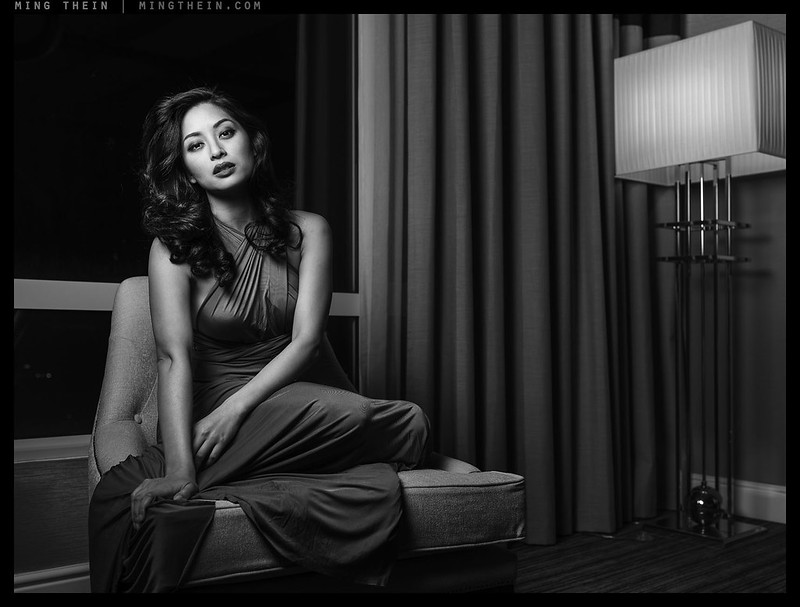
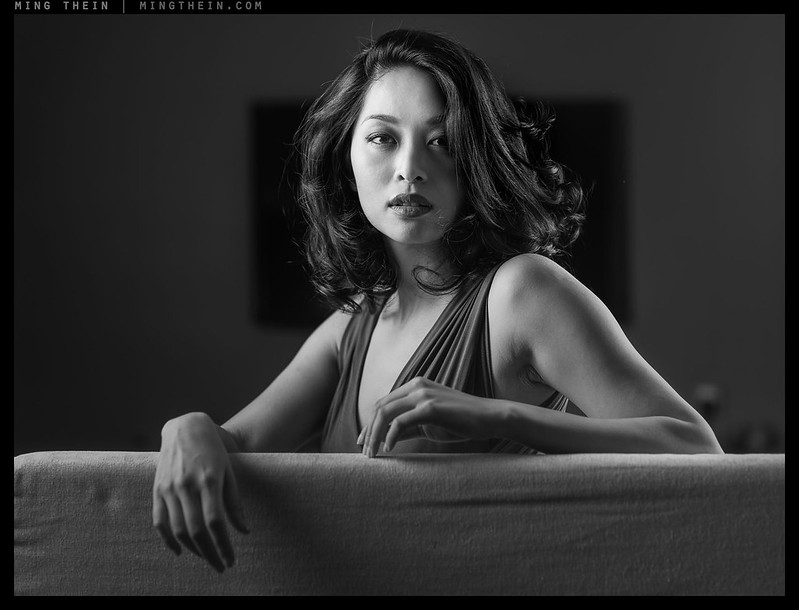
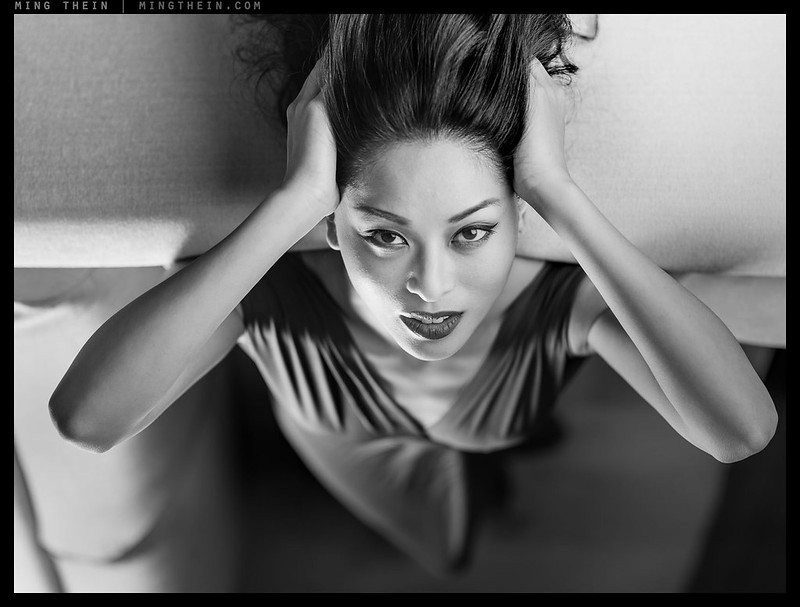
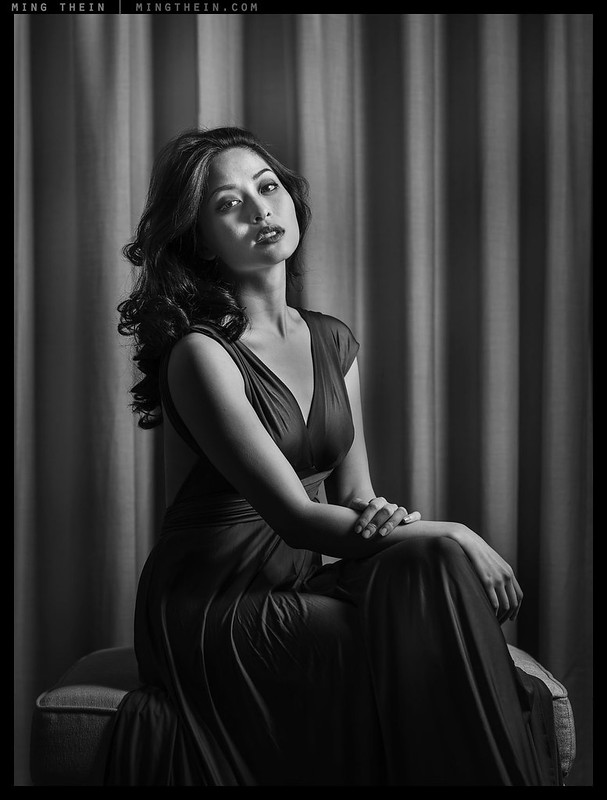
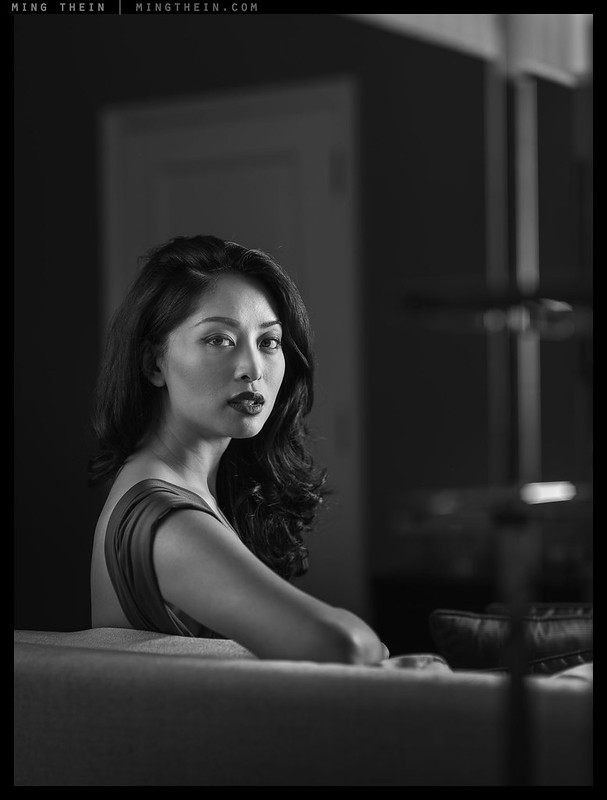
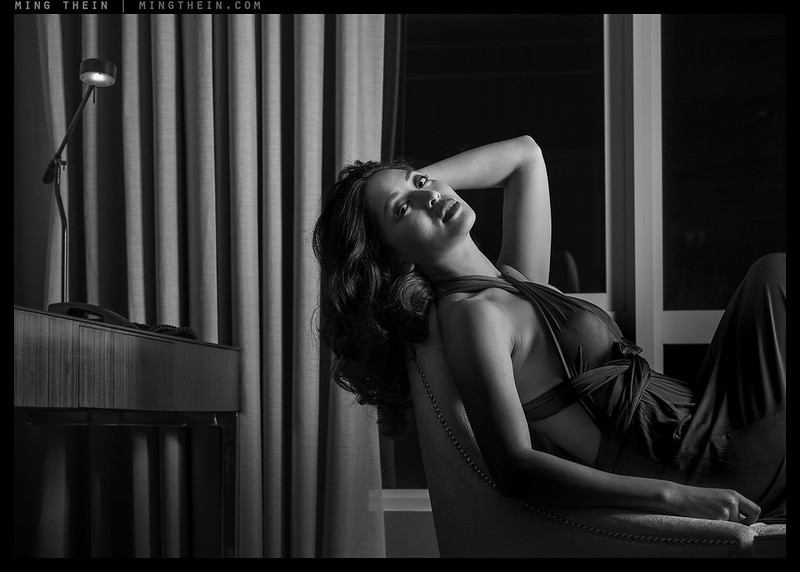
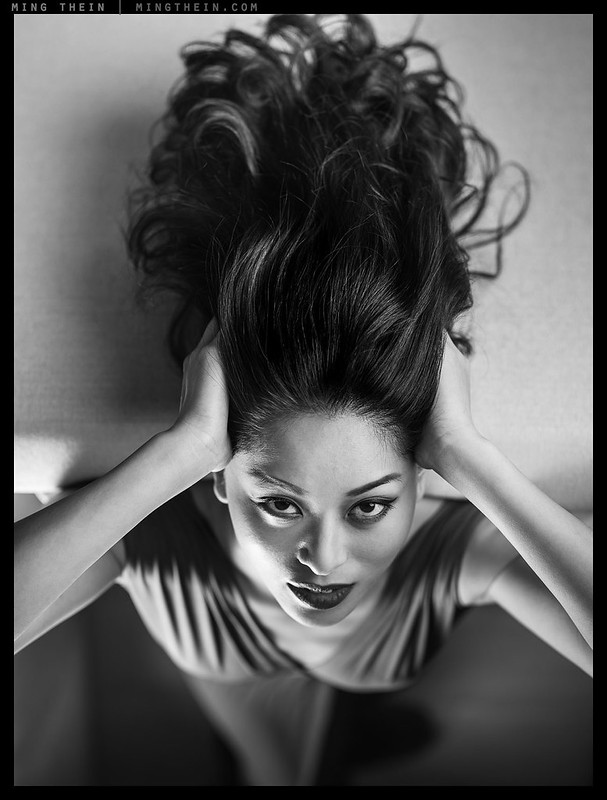
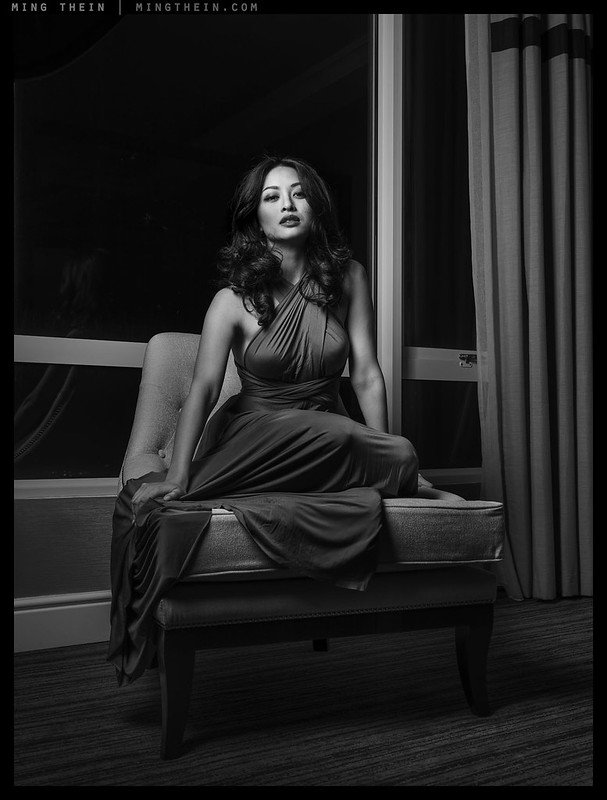
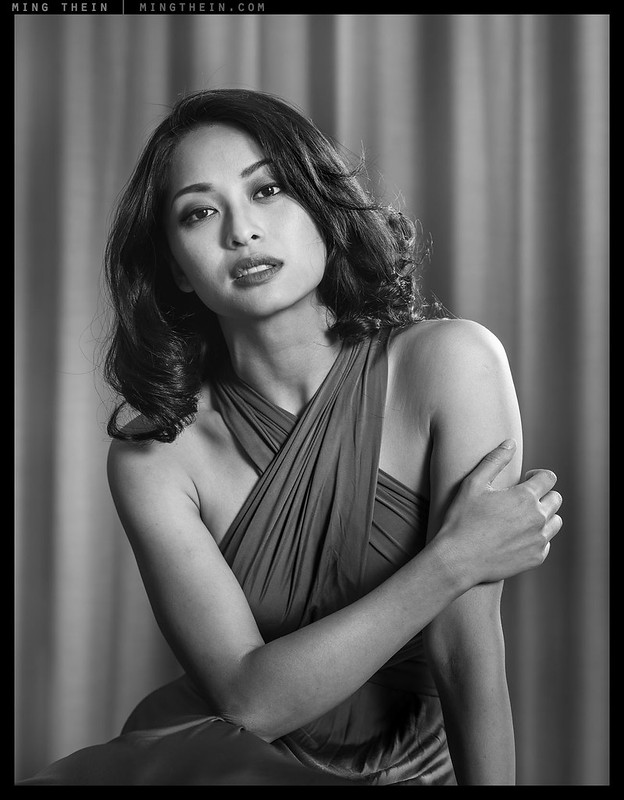






Very nice photos with superb light.
Thanks!
Ming,
Is it possible to rate the images through wireless tethering? I see that the phocus mobile screen has some rating stars at the bottom, but it was not possible assign a rating to the photo.
Yes it is.
Ming – Check out the Elinchrom ELB 400 strobes. They are lighter and a better setup I think than the Profoto B1 or B2. Elinchrom also makes some of the best light modifiers anywhere. And their new Skyport Plus HS transmitter works extremely well all the way up to 1/800th sec on my Hasselblad H5D 50C WiFi. I did a comparison that might interest you on my blog here: http://blog.michaelclarkphoto.com/?p=3886
Thanks Michael. Not so easy to get here (and limited support), unfortunately.
I am also going through a similar thought process on the B1 vs B2. On thing to be aware of when comparing the power output between the B1 and B2 is that it’s the B2 power pac that’s rated at 250 Ws, which means that attaching two heads drops the individual power output to 125 Ws per head. In that case, each B2 head would have 1/4 the output of a B1 head.
Ouch – that’s not good at all. Thanks for the info – 125WS isn’t much more than two SB900s.
your portraits are beautiful. I used the Lastolite Octo easybox II with dual Nikon SB910 and Pocketwizard triggers for a couple of years, sometimes they worked great and sometimes not, but relatively recently went with Profoto B1 and Nikon controller — also use the Profoto light shapers, they are a delight how easy they slip on and off the B1’s. Yes they are heavy, had one fall and break once, so yes sandbags outdoors a must. But very powerful, very reliable, battery lasts forever, and very quick recovery when not at full power. Oh yeah, no wires like the B2’s. Highly recommend.
Thanks – the B1s would be preferred if the controller would easily show/set power for non Nikon/Canon; it doesn’t. So if you’ve got to dial in power on the head, I’d rather do it on a wired pack to avoid having to climb things. There’s also the issue of weight and travel…
That makes total sense, Ming. I am sure the B2’s are very nice also, and like you said, much lighter for travel.
Great shoot! I like that you made in black and white.
Ming,
Gorgeous model…. and fortunate as well, having you for a photographer. This has been a real treat and I would like to see more of the same, as well as more experimentation with this type of work.
R/Carlos
Thanks. Not something I’m chasing personally, but as usual if the opportunity arises, why not…
I have been reading your blog for a year or so now. Not because I like architecture photography but because your articles are found to be philosofical in letters and to some degree psychological between the lines.
It’s like reading good book by chapters: you may not like some of them but generally feel satysfied and happy)
Glad to see your portraits at last.
It’s only my opinion but wanted to share some thoughts.
I think that lighting really let you down this time.
First of all i used to have Lastolite products in past and though these softboxes are made good but the quality of diffused reflections they produce on model’s skin are just too….flat and washed out. You can see no definition and transions are lost.
And…oh…what transions can H5 produce I can only imagine)
Then direct reflections are there but nothing more. They don’t show what H5 is capable of.
Moved from Lastolite to Elinchrom. No support in my county but when I tried Eli in action I understood what is PRO light and what difference it makes.
Elinchrom released new flash control system whith HSS and ability to control all units with ease and speed.
Sounds like ad))
After your review (s) of D810 I moved from canon to nikon and want to really thank you for that!!!
Try Eli & you’ll not regret.
And thanx for the blog)
I have a bit of a support issue here too with Elinchrom, but I suspect that what you’re (not) seeing is small size web compression – because the transitions on my monitor look just fine 🙂
Wonderful tonal effects, in particular when displayed on an iPad screen. Filmish, but better.
Image #2 takes the gold, with #5 the silver.
Thanks – what I like about film is the endless highlights; I think it’s safe to say that nobody complained about lack of grain from larger formats (and smaller enlargements) – it’s just nice we now have full control over that in almost all digital formats 🙂
Er, not what I’d call “film noir”. Where’s the back-lighting? Where are the diagonal stripes from light filtered in through tilted, slatted blinds? There’s a bit too much soft light and spill here. The one closest to “noir” is, I think, the vertical upside-down one, hands against the side of the head, with harsh light on the lit side of her face.
“Noir” isn’t soft, it’s harsh, like the lives of the characters in those films. These are “beauty”, almost “glamour”. Wrong definition, I think: too soft for “noir”, and without any sense of oppression, foreboding, drama or challenge.
Nice idea, though.
Thanks for your opinion. I wonder though if there only a single rigid interpretation of any brief? Do we want to be then told ‘your work is not original’?
Agreed. When I think of noir, I imagine mystery, romance, and subtlety set in an evening/nighttime atmosphere. These photos certainly capture all of that. The classic high contrast noir look has been beaten to death, and these days it usually looks more cartoonish than mysterious. I also like the way the model walks a fine line between heroine and femme fatale. It’s very attractive in a classic Bond Girl way.
Thank you. Perhaps we are also biased by what we find personally attractive…both as audience and photographer? 🙂
Does the „film-noir feeling” need such a high resolution? I suppose, one might create the atmosphere of this kind of movies with analogue technique and less optical perfection. The models skin „suffers” from the extreme resolution. Some more grain is nice from time to time.
I personally don’t want to get trapped in the limitations of old technology. Grain was a necessity, not a choice 😉
Incorrect. Plenty of film processing techniques are designed to enhance and increase grain. It is most certainly a tool to be used, especially with medium format film since grain is such a non issue, as you correctly noted.
Grain is still an issue if the enlargement is big enough. I don’t recall Ansel adding grain 🙂
To my humble opinion there exists no linear scale of technical quality. Choosing a technology is a decision for a particular visual language. So you can also be „trapped” by your believing in high tech. For a lot of jobs it is a good choice – but not always. Some emancipation could lead photographers to a unique style that fits to the task.
Also true.
Beautiful set of photos. Really like them.
Thanks.
I really like this set; not sure I agree with comments about lighting being unnatural – why should it look natural in a shoot like that? Some of them look perhaps a little bit ‘overlit’ – H51-B0000644 copy for e.g. looks like less might’ve been more. But you’ve got to suck it and see and they’re all really good. H51-B0000584 copy is masterly! Again, I wonder if it’d’ve benefited from a BIT less light/fewer lights, but anyway, it’s a gem.
Just a boring, mundane question: did you shoot these handheld? I’ve never seen one of these cameras in the flesh but I always think they look like they’d be total pigs off the tripod!
There was a lot of spill bouncing off white walls – no way to control that, unfortunately.
I shot handheld. It’s fine with 1/800 sync and actually a lot better in the field than you might think – the grip is halfway down the camera, so balance is actually better than a DSLR and large lens (where the grip is at the back corner).
My brain is confused by seeing the model bathed in light from different directions making me aware that it is not natural lightening. The model’s face looks rather harsh in the light. My eye keeps going to the lamp at the right in the first image rather than the girl. First time I have seen a set of images of yours that I don’t like.
Thanks for your opinion. It’s not meant to be natural lighting.
I find this whole topic of natural lighting a bit out of place. A room could have windows on two opposing walls, hard window light from one side could bounce of something reflective and create a second light direction in the same picture… There are lots of situations that could naturally have more than one light source without being artificial… Isn’t photography also about modelling 3D shapes on a 2D surface..? Why would that be limited to situations with only one light source when there are so many examples of multiple lit situations? I think you gid a good job representing 3D in a 2D medium Ming.
The nature of photography is 100% subjective and personally biased, which means there are no rights/wrongs and all opinions are equally valid. By definition this also means opinions and preferences are very much also a product of (and possibly limited by) experience. This includes lighting, of course 🙂
Ming, these pictures are not good — they are much more — they are sublimely beautiful and elegant. You are one of the few photographers I see who consistently shows what is artistically possible with a given camera. I think most people would rather see images of this caliber than yet another generic studio scene and the subpar sample images most camera review sites use. Even though your primary focus is not reviews per se, the major review sites could learn a thing or two from photo essays like this one.
Thank you! That might be because I’m a photographer first and a reviewer only itinerantly 🙂
As much as I like these, and as informative as the explanation was, I can’t help thinking true film noir can only be achieved through film, and harsher contrast. There’s no escaping the digital look here, which affects my “film noir” memory…
There’s also a big difference between web size and print 😉
Nice photos. I have been using the Paul Buff Einsteins for a couple years now with the control mounted on the camera hot shoe for my architectural and portrait work. I love the power range and absolute color consistency at all f stops. I also love being able to set up my lights and then dial the whole scene up or down in an instant if I want to change f stops on the lens. The ability to adjust individual lights in a moment without getting a ladder for hair lights, etc. is also a big plus in working speed. Since getting the Einsteins my Nikon speed lights mostly sit on the shelf.
As with all of this gear, local support is highly important…and that doesn’t exist for the Einsteins in Malaysia. Profotos are much better for me in that regard.
Ming, would more rim lighting on her hair not be film noir style?
Tried it but felt like a bit too much. Wasn’t physically possible to place a light in some instances either. Not necessary to stick to formula 100% 🙂
Nice images, Ming.
6 speedlights? Why did you need so many? In the studio, I customarily use 4 strobes (Profoto D1) but when I’m on location (i.e., not shooting against a seamless in my studio) I keep it simple and use 1-2 strobes.
I use Profoto (D1 in the studio, B1 and B2 when out on location). I personally much prefer the B1 to the B2 because it’s cordless. Does the Profoto Air Remote not work with Hasselblad? You can change your power settings on the remote instead of having to run around to each of the lights.
Power. They’re often paired or tripled; the more modifiers you have, the more light you lose. When you need to stop down there’s no alternative.
B1s are good but heavy because the battery is also on the end of the stand. And no, the air remote will give you triggering but not easily visible power control, hence my preference for the B2s with the generator packs on the ground and easily accessible.
When you say visible power control, do you mean you don’t see numerically what power setting you’re on? Yes, that’s true. But the remote will allow you to adjust the power.
I always use the B1 on a light stand whereas with the B2 I often have an assistant hold that using a stick.
Yes it does, but I find it slower than just turning the power dial 🙂
Agreed: the dial is infinitely more efficient and tactile. I get annoyed with the multiple button pushing of the D1/B1–and after having to have met assistant tell me where the light value is set.
I agree with Ming here. I use the B2 and the B4-1000 instead of the cordless battery Profoto units for these same reasons. I like to instantly know what the settings are. The B4 is, of course, the best, and may provide the best and most consistent light of any of my studio flash units, but using it only make sense if size and portability are not the main considerations, such as for outdoor shoots where we have to haul the gear long distances. In those instances, the B2 is perfect. In the studio I have both the D4 power unit and the several of the D1 monos. I use the D4 far more than the monos—again for the same reasons Ming states.
BTW, I almost never used the TTL feature of the B2, far preferring to control the light manually. With digital cameras, this has become far easier when compared to the days I was pulling test polaroids!
And… Nice work Ming! Beautiful images.
It would be great if we could use the more powerful heads with the B2 pack, even if cycle times were increased or fewer shots resulted…flexibility is the name of the game!
To each his own. I don’t like using the Profoto generators, which I had used during school, and instead prefer using the monolights. In my studio shoots, typically 4 D1’s and when outside, the B1 which is essentially a replica of that user experience but cordless. I only use the B2 if I can’t use a light stand.
And this is why they make both 🙂
My other motivation for using the D4 and and the B4-1000 generators over the D1/B1/B2 (all of which I own) is the quality of the light. The D1/B1/B2 et al produce a more direct, less diffused light compared to the pro heads I use on the D4/B4 generators. This is negative result of the built-in reflector of these three systems. As a result, The monos are noticeably less adept at producing the kind of soft light I need with the types of modifiers I use.
As you say, to each his own. And as Ming says, that’s why they make both.
Love these! Great lighting, great posing, beautiful model. The processing reminds me a lot of your Acros days 🙂
I’ll be interested to hear what you make of that Westcott; like you, I find I simply don’t bother with modifiers that are a faff to set up.
Thanks, that was the intention – Acros and pulled in development. The Wescott arrived one day before I left on this round of travel, so it will have to wait till I return…I also don’t have the triple flash bracket for it yet – I suspect it eats quite a lot of light because of the geometry of the thing.
Wonderfull pictures Ming very sexy but where`s the lurking crime and the handsome private detective? 😕 I know it`s no no this days but a cigarette Laureen Bacall style and a Bogardesque silhouette behind the window and drapes would definitely raise the thrilling dread. Touch of Evil anyone?
p.s. is it possible to make cinema noir in colour? just asking.
Wasn’t part of the brief, and sadly you’re right – cigarettes and holders aren’t PC these days 🙂
I don’t think cinema noir is still cinema noir in color, but it is possible to have similar lighting I think…
Those are wonderful. Off-camera lighting is one of those things I’m still very much a beginner with (I just got a couple of fully manual yongnuo flashes with a commander) and it’s almost like starting photography again! I shall return to these photos as a way to remind me of what is possible.
Thanks Mark. Yes, off camera lighting requires practice…modelling or continuous lights can help a lot with learning to visualise the effects of your speed lights and modifiers though!
Excellent portraits !
Definitely in mood of “black noir”.
Sincerely,
Anatoly
Thanks!
Elegant and beautiful modeling.
Thank you.
You welcome .
The argument I’ve heard in favor of ProFoto is the ability to find items at rental locations. Broncolor are awesome in every way, other than price. Elinchrom ELB 400 splits the difference, though you are essentially self supported. I’m bouncing around these choices too. One set-up would replace PocketWizards and Speedlights. The weight to power output is the real consideration. Given your notoriety, perhaps some deals may come your way.
I’m leaning towards four B2 heads and two power packs. The ability to adjust power from the base and mount lightweight lights easily in odd locations is very appealing, and I don’t generally need that much power – four B2s is already double the total speedlight output I have now. Deals are always nice, though I never take anything for granted of course!
Really enjoyed the writeup and I think the photos are really, really good. The B&W tones are very smooth and the contrast is spot on.
Thanks Matt!
Gorgeous photos. Helluva process.
Thanks!